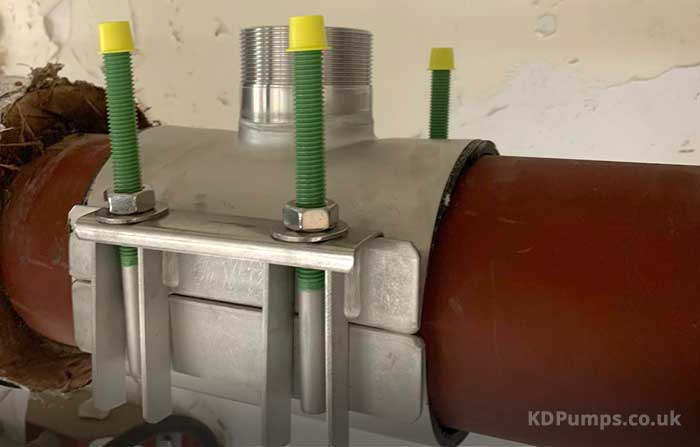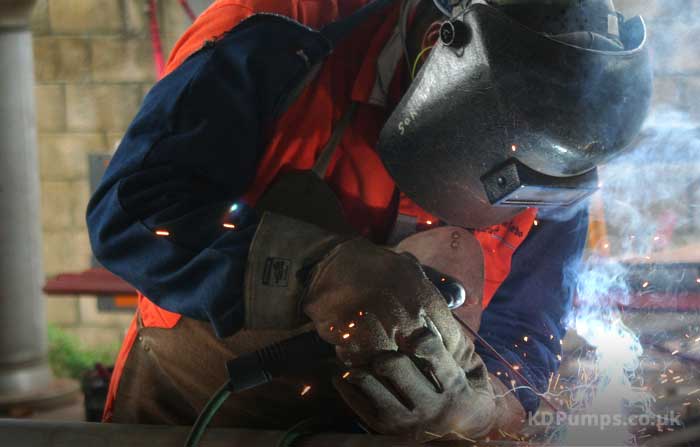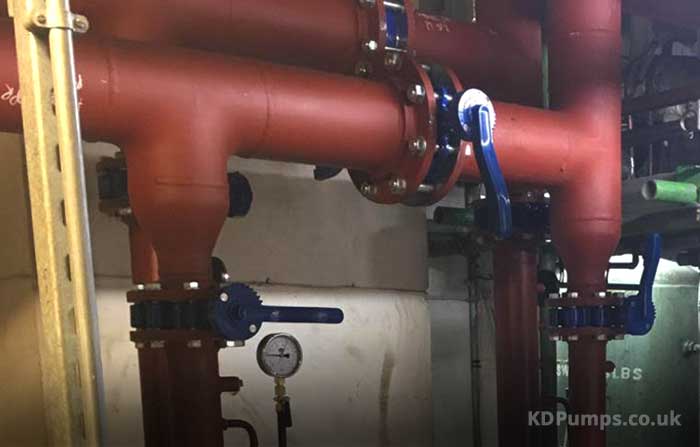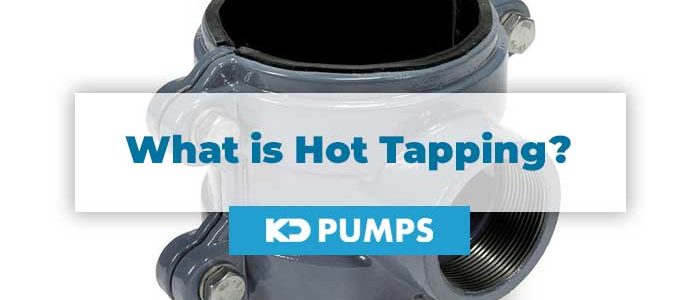What is Hot Tapping (Pressure Tapping)?
Hot tapping is a process which is often used in different contexts, particularly in cases when repairs or maintenance works need to be carried out.
In most cases this would have involved the need to stop the particular service.
But with hot tapping, there’s no need for this as the work can be carried out onto in-service equipment.
Article Chapters
What is Hot Tapping?
Hot tapping, or pressure tapping, refers to the method of connecting to a pressurised system such as a pressure vessel or a pipeline.
This connection can be done either by drilling or cutting, and without the need for removing the pipe or tank.
Hence, the installation of such connections to the pipelines will be carried out even while they remain in service.
Hot Tapping Methods

Hot tapping has the same principle, but it can be carried out slightly differently according to the case.
The hot tapping process generally starts off with the fitting of a new branch to the host pipeline.
The fittings required can be attached by welding or else by using a mechanical hot tapping split tee.
Subsequently, a full bore isolation valve is installed.
This valve and the branch will then be pressure tested.
A sealed drill rig will also be attached to this valve.
Following this, the pipe will be drilled, keeping the valve in an open position throughout the process.
Once the drill is removed, the valve is then closed and a blanking flange or plug is fitted.
The hot tapping procedure can also be carried out as follows:
- The hot tapping machine is mounted to the piping system.
- Start the hot tap as soon as the cutter touches the parent pipe.
- As soon as the cutter has gone through completely, stop rotating and advance it to allow the u-wires to drop.
- The cutter is withdrawn with the coupon or cut out retained by the u-wires.
- The fluid flowing in the pipe ceases between the two hot tap locations. Then a by-pass is made to maintain the regular flow in the system. Any fluid present in this section is drained out by means of a vent or a drain.
- Cutting and welding as required is carried out between the two hot tap points. This generally includes the installation of a valve or a piece of pipe.
- Once again the fluid will start to flow, always ensuring that the original pressure is attained.
Hot tapping is the first procedure that is carried out in line stopping.
In such a case a hole saw is used to make an opening in the pipe.
Then a line plugging head is inserted.
Common Hot Tapping Applications

Hot tapping pipe services are used for a wide variety of applications.
They are ideal to carry out any repairs or maintenance that may be required as there is no need to shut down the system.
Hot tapping is also ideal for pressure and vacuum installations, new pipeline construction or tie-ins, valve installations, and when by-pass piping systems need to be installed.
It is also used for thermowell coupling installation, sight glass installation and when orifice taps for flow meters need to be included.
Hot tapping is also used to drain off pressurised casing fluids.
It is also used in procedures where test points need to be added, or when sensors for temperature and pressure need to be added.
Common Pipelines

Some of the most common pipeline mediums for hot tapping include those used for natural gas, domestic water services, potable water, compressed air, heating, petroleum products and sewage.
Advantages of Hot Tapping
Hot tapping offers a range of benefits, including:
- The main advantage is definitely the fact that there is no need to stop the particular service from being offered while the process is carried out. Hence there will be no disruption at all, or at most very little.
- Hot tapping prevents the loss of harmful liquids or gases.
- There is no backfilling time, and no drain down time either.
- Hot tapping is ideal to isolate sections of ring mains.
- Hot tapping can be applied to various types of liquids, gasses as well as compressed air.
When to Avoid Hot Tapping
While there are numerous benefits to hot tapping, it is important to also note some drawbacks that it presents.
First of all, problems could occur with hot tapping.
Should there be unstable decomposition of the product that is flowing through the pipes, or the risk for burn-through, one should be cautious.
Burn-throughs could occur if the welding on the pressurised pipe is carried out and the unmelted area is not strong enough to withstand the internal pressure.
Unstable decomposition could occur if one does not give attention to the importance of not exceeding the critical temperature, which depends on the type of flowing product in that particular case.
The flowing product will also have an impact on the risk of hydrogen cracking.
If it is a type of product that could increase the rate of the heat flow in the region where the welding is being carried out, there will be a bigger susceptibility of hydrogen cracking.
Hence the proper choice of heat input and the use of low-hydrogen electrodes will be necessary.
There are various safe procedures that can help reduce such risks and problems.
Hot tap welding can be carried out smoothly by using the right approaches to match and control the cooling capacity of the pipeline, and often computer heat flow modelling techniques are also used.
However in certain situations it is not permissible to use hot tapping since welding operations are not allowed when there is a mixture of gases which are flammable, or which may become flammable when exposed to the heat input from welding operations.
Hot tapping cannot be carried out in cases where substances could undergo a reaction, such as decomposition.
Such substances could become dangerous when there is a rise in pressure, leading to explosions or attacks on metal.
It is also best to avoid using hot tapping in cases where compressed air in the presence of hydrocarbons might be present in the equipment or pipes.
Or if there are oxygen-enriched atmospheres, or any pipes handling sulphur compounds, acids, chlorides or peroxides.
Conclusion
As you have learned, hot tapping is a convenient process that is used in various fields and applications.
As long as it is carried out carefully by professionals, it is a reliable and safe procedure that offers various advantages, as discussed above.


Comments are closed.